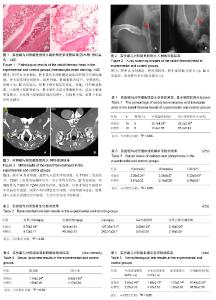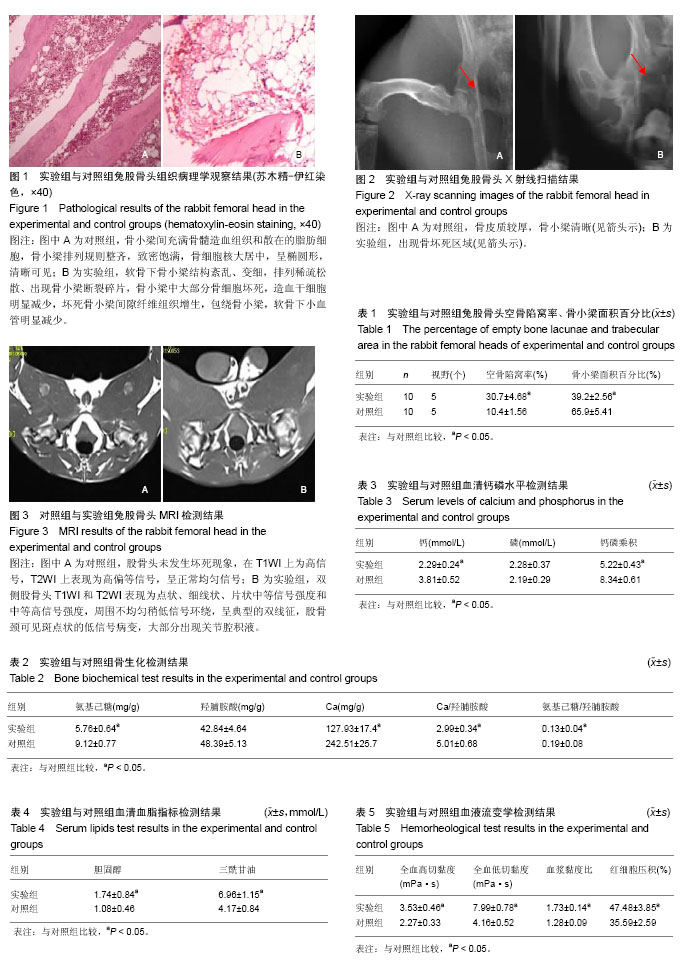| [1] Ichiseki T,Ueda S,Ueda Y,et al.Involvement of necroptosis, a newly recognized cell death type, in steroid-induced osteonecrosis in a rabbit model.Int J Med Sci.2017;14(2):110.[2] Signorino JA,Jayaseelan DJ,Brindle K.Atypical Clinical Presentation of Rapidly Progressing Femoral Head Avascular NecrosisJ Orthop Sports Phys Ther.2017;47(3):217.[3] Min HU,Zhao HB,Qian CY,et al.Ultrastructural evaluation of the SANFH rabbit animal models intervened by Osteoking.China J Tradit Chin Med Pharm. 2011;26(3): 486-489.[4] 王佰亮,李铁军,岳德波,等.骨髓间充质干细胞增殖能力与皮质类固醇性骨坏死[J].中国组织工程研究,2014, 18(1):7-13.[5] Song HM,Wei YC,Li N,et al.Effects of Wenyangbushen formula on the expression of VEGF, OPG, RANK and RANKL in rabbits with steroid-induced femoral head avascular necrosis.Mol Med Rep. 2015;12(6):8155-8161.[6] Fukunaga Y,Izawa-Ishizawa Y,Horinouchi Y,et al.Topical application of nitrosonifedipine, a novel radical scavenger, ameliorates ischemic skin flap necrosis in a mouse model.Wound Repair Regen. 2017;25(2):217-223. [7] 李传将,王万明,庄颜峰,等.改良激素性股骨头坏死动物模型的建立与评价[J].中国组织工程研究,2010,14(24):4393-4397.[8] Russo BD,Baroni EL,Saravia N,et al.Prevention of Femoral Head Deformity after Ischemic Necrosis Using Ibandronate Acid and Growth Factor in Immature Pigs.Surg Sci. 2012;3(4): 194-199.[9] Banaszkiewicz PA. Idiopathic Bone Necrosis of the Femoral Head. Early Diagnosis and Treatment. J Bone Joint Surg Br. 2014; 67(1):3.[10] 曹良权,杜斌,孙光权,等.不同剂量糖皮质激素联合马血清构建激素诱导型股骨头缺血性坏死兔模型[J].中国组织工程研究, 2017, 21(8):1229-1235.[11] Lévigne D,Tobalem M,Modarressi A,et al.Hyperglycemia increases susceptibility to ischemic necrosis.Biomed Res Int. 2013;2013:490964.[12] 沈龙祥,祁兆建,王卫东,等.激素性股骨头缺血性坏死动物模型的建立[J].浙江中医药大学学报,2005, 29(4):85-87.[13] Xiao CS,Lin N,Lin SF,et al.Experimental study on avascular necrosis of femoral head in chickens induced by different glucocorticoides.Zhongguo Gu Shang.2010;23(3):184-187.[14] 肖春生,林娜,林诗富,等.不同糖皮质激素诱导鸡股骨头坏死的实验研究[J].中国骨伤,2010,23(3): 184-187.[15] Xi H,Tao W,Jian Z,et al.Levodopa attenuates cellular apoptosis in steroid-associated necrosis of the femoral head. Exp Ther Med.2017;13(1):69-74.[16] Singh JA,Chen J,Inacio MC,et al.An underlying diagnosis of osteonecrosis of bone is associated with worse outcomes than osteoarthritis after total hip arthroplasty.BMC Musculoskelet Disord. 2017;18(1):8. [17] Motomura G,Yamamoto T,Miyanishi K,et al.Bone marrow fat-cell enlargement in early steroid-induced osteonecrosis--a histomorphometric study of autopsy cases.Pathol Res Pract. 2005;200(11-12):807-811.[18] 田润,李越,万世超,等.坏死状凋亡通路抑制剂在兔早期激素性股骨头坏死中的作用[J].中华关节外科杂志(电子版), 2017,11(2): 38-44.[19] Adapala NS,Kim HK.Comprehensive Genome-Wide Transcriptomic Analysis of Immature Articular Cartilage following Ischemic Osteonecrosis of the Femoral Head in Piglets.Plos One.2016; 11(4):e0153174.[20] Heiss WD,Zaro WO.Validation of MRI Determination of the Penumbra by PET Measurements in Ischemic Stroke.J Nucl Med.2017;58(2):187-193. |

